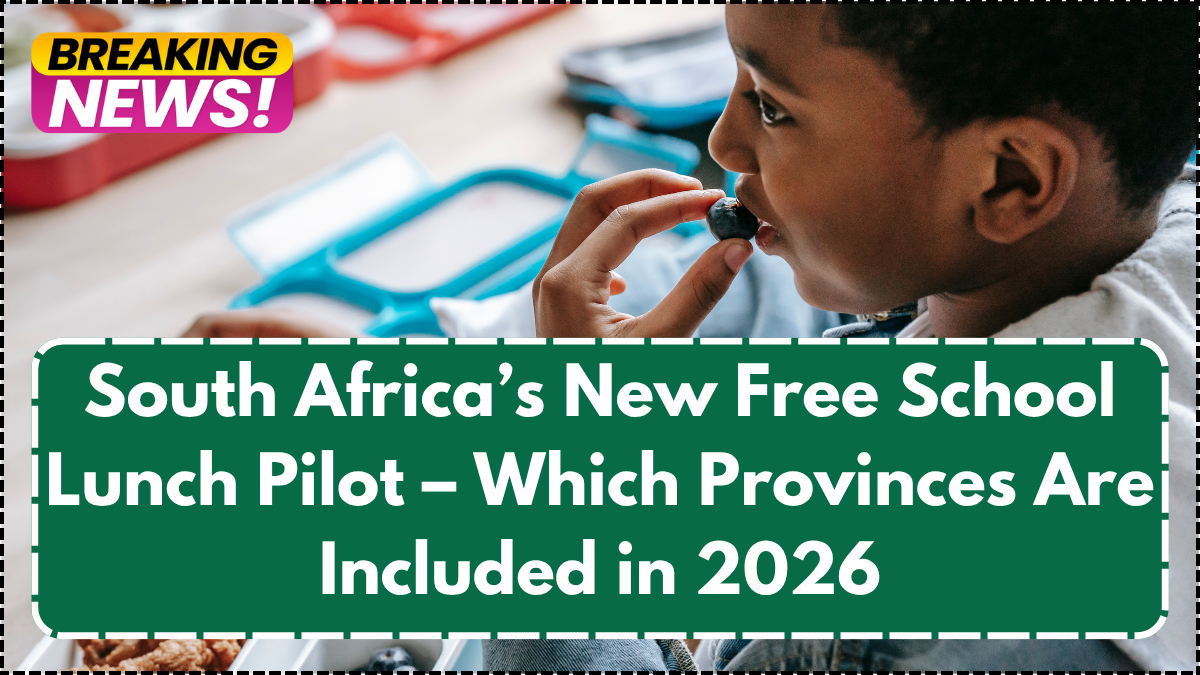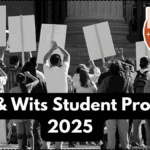In a significant move to tackle childhood hunger and improve academic outcomes, South Africa is rolling out a new Free School Lunch South Africa 2026 pilot programme. Announced by the Department of Basic Education earlier this year, this initiative aims to provide nutritious meals to learners in public schools, starting with selected provinces. The pilot is not only a step towards addressing food insecurity but also a broader investment in the future of South Africa’s education system.

What Is the Free School Lunch Pilot All About?
The school nutrition pilot SA is designed to ensure that learners receive at least one balanced meal during the school day, particularly in under-resourced areas. While South Africa has had national school nutrition programmes in the past, the 2026 pilot brings a refreshed, more data-driven approach. It incorporates modern tracking systems, dietician-approved menus, and collaborations with local food suppliers to improve both efficiency and meal quality. The goal is to test a scalable model that can be implemented nationwide within the next five years.
Which Provinces Are Included in 2026?
For 2026, the Department of Basic Education has selected five provinces to participate in the pilot. These provinces were chosen based on a mix of need, existing infrastructure, and readiness to scale:
| Province | Criteria for Selection | Key Features of Implementation |
|---|---|---|
| Eastern Cape | High poverty and malnutrition rates | Central kitchens, mobile food units |
| KwaZulu-Natal | Dense rural populations | School gardens, local vendor supply |
| Limpopo | Existing nutrition programme performance | Integration with health services |
| North West | Logistical readiness and community support | Digital tracking of meal distribution |
| Free State | Smaller scale for control testing | Pilot evaluation and feedback loops |
These provinces included 2026 will serve as testing grounds for policy, logistics, and feedback. Outcomes will help shape the national rollout plan.
How Will It Support Education?
Access to daily meals plays a pivotal role in improving concentration, attendance, and classroom behaviour. The education food support component of this pilot goes beyond just meals. It includes nutrition education, teacher training on identifying malnutrition, and parent engagement through community workshops. Schools involved in the programme will also receive monitoring visits and support from district-level coordinators.
Experts suggest that feeding schemes like this not only reduce absenteeism but also promote social equity by leveling the playing field for students from different socio-economic backgrounds. The government hopes that well-fed learners will perform better academically, helping to close the education gap across regions.
Monitoring, Funding and Future Prospects
The pilot will be monitored by a coalition of government agencies, NGOs, and independent evaluators. Monthly reports will track food quality, learner feedback, and attendance changes. Funding is being sourced from a mix of national education budgets, provincial contributions, and public-private partnerships.
If successful, the Free School Lunch South Africa 2026 pilot could expand to all nine provinces by 2028. This model may also attract international support, especially from organisations focused on child welfare and education development.
Conclusion
The 2026 school nutrition pilot marks a bold, targeted effort by South Africa to link food security with academic achievement. By focusing resources on selected provinces included 2026, the country is creating a blueprint for a larger, more sustainable education food support network. As implementation unfolds, these early efforts could lay the groundwork for a healthier, more equitable generation of learners.
FAQs
What is the goal of the Free School Lunch South Africa 2026 programme?
The primary goal is to combat learner hunger and improve academic performance through consistent access to nutritious meals in schools.
How were the provinces selected for the pilot?
Provinces were selected based on a combination of poverty levels, infrastructure readiness, and potential for successful implementation.
Who is funding the 2026 school nutrition pilot SA?
Funding comes from a blend of national and provincial education budgets, along with support from private sector partners and NGOs.
Will the programme expand to more provinces in the future?
Yes. If the pilot proves effective, a nationwide rollout is planned by 2028, with insights from the pilot guiding the expansion.
What makes this pilot different from previous school feeding schemes?
The 2026 pilot introduces enhanced monitoring, digital systems, dietician-approved meals, and local community involvement, setting it apart from older models.
Click here to know more.
Akesh is a talented content writer known for creating captivating and impactful narratives. He understands what resonates with audiences and tailors his content to inform, inspire, and engage. From blog posts and articles to marketing copy, his work consistently combines creativity with clarity. His skillful writing strengthens our brand’s voice and ensures our message leaves a meaningful impression.



